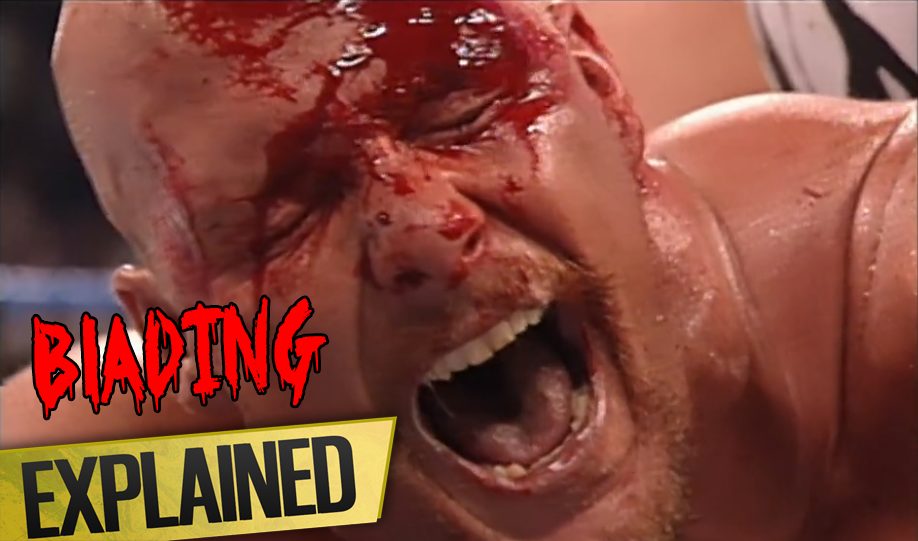
By Laurie Blake
There’s an old adage in wrestling that red equals green.
And no this isn’t just wrestlers getting the green cross code muddled up, though that would explain the number of car accidents broadcast on national TV.
It’s to do with blood. Crimson, copper smelling blood. His blood. Or his blood. Or his…
Blood running over a wrestler’s face, forming a crimson mask and creating an image that is somehow both terrifying and sympathetic, almost as if we need that stuff to live and here it is, buckets of it, all over the mat.
It can make you wonder how your favourite babyface is still standing, feel like poetic comeuppance for your hated heel or show you just how much these two men despise one another as they beat seven bells and six pints of the red stuff out of each other.
Blood in wrestling has been used to shock audiences for years, creating the kind of visceral response that gets people talking which usually increases ticket sales and has people coming from miles around to see the spectacle.
But it also did something much more useful for wrestling back when it was in the kayfabe closet – added a dose of reality.
Problem is though, bleeding on cue isn’t in many people’s repertoires, so over the years wrestlers turned to many cunning tricks and thousands of slicing nicks in order to GET COLOUR.
But with a litany of incidents occurring around blading, new knowledge of infections and a shift towards family focussed entertainment, does the practice have any place in modern wrestling?
For the uninitiated among you, blading is the practice of cutting oneself during a wrestling match or segment in order to produce blood or to put it in cutesy wrestling terms “juice”.
Historically, the most popular way to produce this sanguinous Sunny Delight is with the use of a small razorblade to nick the forehead, which due to the number of blood vessels present tends to get the juice-flowing like a birthday party during dry January.
The added benefits of this particular spot is that the blood mixes with the sweat mid-match and begins to truly cover the face in crimson, it apparently heals relatively quickly to boot. Don’t try it at home, it’s a really very stupid and really quite old idea.
Purposefully bleeding in pro wrestling goes back at least as far as the 1930s and a man named Kirby Watkins, who learned how to wrestle in the navy, and went on to make a name for himself as Sailor Watkins.
Watkins was wild in the ring and described one one newspaper as climbing the ropes and beating his chest “like a monkey”. But he also added a little zest to some of his matches by drawing blood from his opponents – either with his teeth, sharpened fingernails or even the metal tips of his boot laces. Now you know why they call drawing blood without a blade “hardway”.
His success spawned imitators in ichor like “Dangerous” Danny McShain who was already infamous for a stiff working style, opting to just deck his opponents rather than affording them the opportunity to merely act-like he’d hit them. He also pioneered a piledriver finisher that just involved dropping people on their heads. Nowadays he would be a lawsuit waiting to happen, back then: really big star.
Anyway, he added to his roughhousing repertoire by adopting blading to add some MUCH NEEDED realism to his matches.
Blading only grew in popularity from there, becoming common around the middle of the 20th century as blood made the transition from grotesque extra to featured event stipulation with the advent of First Blood matches, where the loser was the first to bleed – the weakling.
And this was when the wider industry cottoned on to the idea that red equals green – blood is money.
During a match in the 1950s Mark Lewin accidentally kneed Mike Sharp in the face busting him open hardway, Lewin said in an interview that: “There was no blood in San Francisco at the time, so that was the first thing people saw, and business just shot up.”
Wrestling promoters were basically yelling “come and see the amazing bleeding man” and people were handing over their dollars in droves, which was causing kickbacks for the performers too.
Don Fargo of the Fabulous Fargos used to say that he’d let people bust him open over the eye “for an extra $25”.
One walking bloodbath attraction was The Sheik, cool original flavour, aka Edward George Farhat, who throughout the 60s and 70s would conceal bits of wood, pencils and any other sharp object about his attire to stab his opponents with. He’s the uncle of Sabu, which explains a whole lot.
Despite the graphic nature of his particular brand of grappling, word often spread of The Sheik’s coming and folks would flock to bask in the blood and guts glory.
One man who turned his notoriety for blading into a nightmare for opponents was Abdullah the Butcher, the “Sudanese sadist” with deep rivulets dug into his forehead from aggressive attempts to get colour.
Like The Sheik, Abdullah’s reputation for recklessness preceded him, and he was used as a special attraction on wrestling shows throughout Canada and the United States in the 60s. When blood put bums on seats.
But Abdullah’s violence wasn’t always vetted with the opponent and his extreme tendencies would often overstep boundaries, as Superstar Billy Graham described while recollecting a show he worked with the butcher:
“He just started slicing this Indian’s face up and his neck and his shoulders, my god it was like manslaughter, and 30 seconds later it was over and we went back to the locker room and I get back there and I see this Indian standing there, covered with blood from his head to his wrestling boots. Literally covered in blood and he was a dark-skinned Indian and he was starting to turn white from losing blood and I said “ this guy is going to die”.
“It was chilling.”
And when Billy asked why Abdullah had mutilated his opponent without consent:
“I gotta get my heat baby.”
Wrestling.
Perhaps most notable among Abdullah’s transgressions though is reportedly infecting Devon “Hannibal” Nicholson with Hepatitis C by blading him without consent during a series of matches around 2007 – Nicholson later sued and won a $2.3 million judgement in 2014.
But during the 60s when Abdullah was growing in infamy for his ferocity, the secrets of wrestling were closely held and it wasn’t until the mid-1980s when the veil was lifted and the true dangers of blading became apparent for all.
During an exposé on the business by 20/20 that also peeled the curtain back on kayfabe, former NFL quarterback turned pro wrestler Eddie Mansfield not only taught John Stossel how to take a bump, but casually showed off how wrestlers cut themselves to create some claret.
“Some keep the blade right here in their mouth, some in their tights, some in their fingers.”
“You take it out like that and you go just like that.”
“See if I was sweating it would be pouring.”
Mansfield lifted the lid on a few of wrestling’s big secrets but none quite as grisly as blading.
For it seems there’s a certain power to blood during a performance, and often more is better, that’s why some wrestlers would take aspirin before show or have a beer to thin their blood and get the gush just right and it’s also why some overzealous individuals likely cut too deep and ended up needing stitches.
And it’s fairly easy to see where some of that power comes from, because in an industry that was always walking the line between fiction and reality, and combatting rumours that it was all one big work, blood is something that isn’t easy to fake.
So no wonder promoters were protective of the practice of blading, Jim Cornette once sa- id that if a wrestler ever dropped a blade in front of fans then it was going to be tough on the rest of the performers.
“Especially in TV studios, if they were doing an angle and somebody got popped and the blade flew out in the audience, well then back in the old days, especially in the south and Texas or whatever someone on TV would do a hardway right in front of the audience so they could see it. Make sure they knew it was real.”
And as discussed earlier hardway sucked, back in the 50s before blading hit the bigtime, guys used to get bloody by being hit with a bare knuckle right above the eye, and as that wound became scar tissue that particular spot became a little bit easier, but yikes.
There was also tales of people tenderising their foreheads with a fork before matches so they’d bust open better, which hardly sounds sanitary.
Which is one of the major concerns when it comes to blading and bleeding in wrestling matches in general, as I was told by trained nurse Karla who has worked as a medic on wrestling shows up and down the UK for a few years now.
“My main concern though is if they’re blading and then they’re still in the ring for a while afterwards, those canvasses aren’t the cleanest, I’ve seen wrestling cavasses. Usually if someone is going to blade it’s the main event so it’s after a lot — of people have been in that ring and even though I know that it is wrestling etiquette that you don’t wear outside shoes in the ring, anything like that, there are still people that do before the show starts they jump in they have a roll around things like that, you don’t really know what’s on that canvas, they’re so big how often are they being cleaned. So that’s one of my worries for anything that could get into there and cause some sort of infection.”
“Also, just the cleanliness of the blade, where are they keeping this blade throughout the match, are they tucking it into a boot, are they tucking it in their wrist tape. Then there’s the risk of if it’s in their wrist tape, if they fall on it and anything goes funny, end up cutting themselves somewhere else.”
From talking to Karla it seems like one small slash can set off a whole series of questions and concerns for medical professionals that, man, you really have to weigh up the importance of the spot in terms of storytelling and impact before you go through with it.
Because here are even more reasons not to:
“One thing that does worry me is that if it someone who isn’t experienced in blading, once you’re in that ring and under that spotlight, you’ve got everybody watching you, your adrenaline is pumping they may not necessarily realise how deep they are cutting. So if they do it too deep or if they do it too many times there’s always the risk of too much blood loss, they’re just going to make a mess of their faces as well.”
“And there’s also risk of anything that might be bloodborne, any bloodborne infections, so your hepatitis, things like that…i can imagine that if someone just decides on the day that is what they are going to do, then they haven’t had relevant test or had immunisations, because even just small blood splatters can go quite far and if you’re sat, if you’re an audience member, you’re sat front row, somebody spins around you get some of that blood it goes in your eye, it goes in your mouth anything like that you run the risk of getting an infection as well.”
And these risks are definitely why blading died out in the mainstream environment – as wrestling tilted towards family entertainment in the mid-80s and the AIDs epidemic was causing global headlines the WWF tried to stomp out the practice, while WCW carried on well into the 90s but eventually outlawed it as well.
There are other factors to consider too like having to re-edit live segments for re-runs or the ratings of things when they made their way to VHS and DVD, brand deals, I mean look at WWE even now if someone bleeds and they have to make the video black and white on YouTube to get around the algorithm. I’ve had to be so careful editing this video! I haven’t done it yet, because I need this talking bit to do that bit, but I will be careful.
With the risks of being sued, hurting relationships with broadcasters or brand partners, it means you’ve got have regulations in place when it comes to this stuff.
Like pre-contract testing to root out blood-borne infections but also a zero tolerance policy to the act itself.
WWE told Cagesideseats that their party line when it comes to blading is:
“WWE programming is TV-PG and we don’t permit intentional bleeding. The communication or contact between our performers and referees is part of our safety protocol. That said, unintentional blood sometimes occurs, and we do our best to minimize.”
And over the years they’ve enforced that with fines like when Batista bladed against Jericho in a steel cage match on Raw, for which he not only got slapped with a bandaid but also a $100,000 fine.
Or Bob Orton bleeding over Taker in 2005, when he’d had Hepatitis as a child.llFunnily enough, he didn’t stay with the company long after that.
And you’ve got to think, did it make the wrestling better? Did the Mass Transit incident make that match any better? Was Batista’s blade job $100,000 worth of drama?
Is it actually good wrestling? Is it Luke?
“No.”
Wrestling legend Lou Thesz agreed, he couldn’t stand it – writing in his autobiography:
“By the late 1940s, we’d begun to see a handful of boys who regularly used blood in their matches, and they used it for one simple reason: they couldn’t do anything else,”
“It was the cheapest way of attracting attention, but it worked, and it was a way for them to stay employed.”
And in a world of PG wrestling on mainstream TV, blood has been deployed to good effect by the likes of AEW to differentiate them from their closest competitor.
Cody with his Flair blonde hair has been dying it red on the reg, just like Ric, you’ve got Joey Janela and his predilection for thumbtacks, and a champion in Jon Moxley who left WWE exactly so he could go back to a more hardcore style of wrestling.
And yeah, a lot of times that blood is hardway, but this certainly wasn’t and it is one of the most powerful moments of wrestling storytelling for a good few years.
Naturally, Vince McMahon slammed them for the “blood and guts and gory things that they have been doing”. But since then WWE popped someone’s eye out on PPV, so it’s the pot calling the kettle Tyler Black. So really the impact this more extreme violence has made certainly hasn’t gone unnoticed by WWE.
Because there’s just something powerful about blood, some primal response the sight of it provokes in us, one that won’t let us look away:
Psychiatrist Dr David Henderson said that this plays into our response to tragedy:
“Witnessing violence and destruction, whether it is in a novel, a movie, on TV or a real life scene playing out in front of us in real time, gives us the opportunity to confront our fears of death, pain, despair, degradation and annihilation while still feeling some level of safety,”
“We watch because we are allowed to ask ourselves ultimate questions with an intensity of emotion that is uncoupled from the true reality of the disaster: ‘If I was in that situation, what would I do? … We play out the different scenarios in our head because it helps us to reconcile that which is uncontrollable with our need to remain in control.”
Then you chuck into that roiling cauldron of emotions what psychologists call the negative bias, as psychologist Dr Renee Carr put it:
“Negative bias is the tendency to automatically give more attention to a negative event and negative information than positive information or events.”
A cursory glance at the YouTube analytics for WrestleTalk News episodes would prove that, the more negative the headline the more views. And it’s also meant these instances where wrestlers have bladed or at least bled become lasting memories.
It’s Austin passing out in the sharpshooter, Eddie Guerrero pouring pints against JBL or that image of Dustin Rhodes crying out covered in blood which is seared into my mind.
The sociologist Émile Durkheim posited that blood was one of the bases of human religious experience, that our earliest ancestors would create totems with it or paint their history with it, and that this has trickled down to all of our social and spiritual existences.
So there’s something almost poetic – and certainly gross – about blading’s legacy in wrestling.
As wrestler Damien Demento wrote to his New York State Senator in order to pressure them to ban blading:
“Sadly, many wrestlers feel this practice is a tradition, and feel a kinship to the business if they perform this.”
So it’s a ritual, in the kind of macabre witchy Bray Wyatt mold: what could show more dedication to your craft than giving your blood for it? To bleed onto the same canvas your forebears did, to become part of the fraternity.
And just to bring this back to why that is NOT a good thing, Karla trained nurse said this:
“As a medical professional: no, there is no place for blading within wrestling. There are too many risks, there’s so many other ways you can tell a story.”
But then she said.
“Ultimately the medical professional in me overrides it all and I would say no, but if I was just a wrestling fan, I wouldn’t like to see it every s how, I wouldn’t like to see it used too often, but occasionally when it is a surprise when it’s just a shock and you’re like oh my goodness, it really can enhance the story.”
And isn’t that kind of what all wrestling is? A conflict between the head and the heart?
Of knowing you shouldn’t enjoy something and that you should look away, but not being able to tear your eyes from the ring for even a moment.
Of screaming ‘“please don’t die” and “holy shit” as someone does something you know deep down is monumentally stupid for the purposes of your entertainment and fuck me are you not entertained, but you’re also seriously considering calling an ambulance.
But then you always know in the back of your mind that if done correctly with most wrestling people shouldn’t actually be badly hurt, so then when it comes to blading and the very real risks involved not just for the performers but everyone involved in the show right down to the audience, it’s probably too real for modern wrestling.
What are your thoughts on the above? Let us know in the comments on Twitter or Facebook.
Trending
- WWE Star ‘Probably’ Will Be Fired Following Recent Allegations
- AEW Star Announces Pregnancy
- Popular AEW Star Taken Off The Road
- Former WWE Star Reveals Truth About First Singles Match In Five Years
- New WWE Signing’s Planned Schedule Revealed
- WWE Stars Set For Big Interpromotional Appearance Update
- WWE Star Declares Himself ‘Better Than The Undertaker’
- Former AEW Star ‘Speaking’ With WWE
- AEW’s Nyla Rose Fires Back At ‘Official Transgender Warning’
- AEW Name Reacts To WWE Abandoning ‘Sports Entertainment’

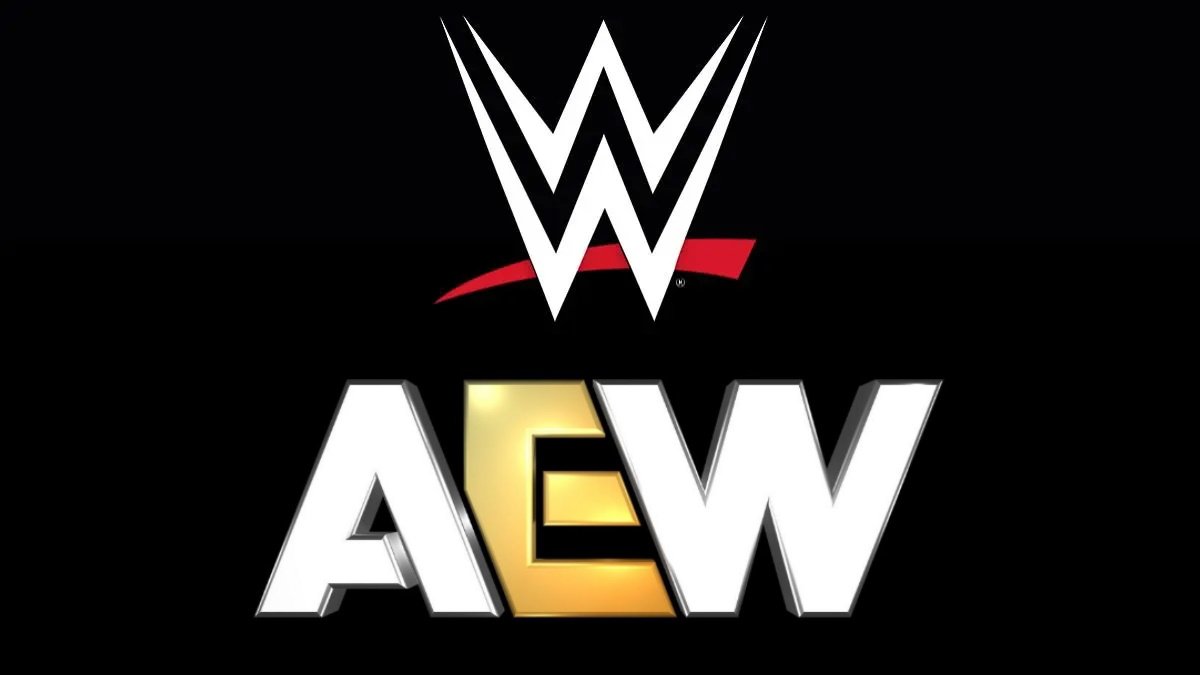
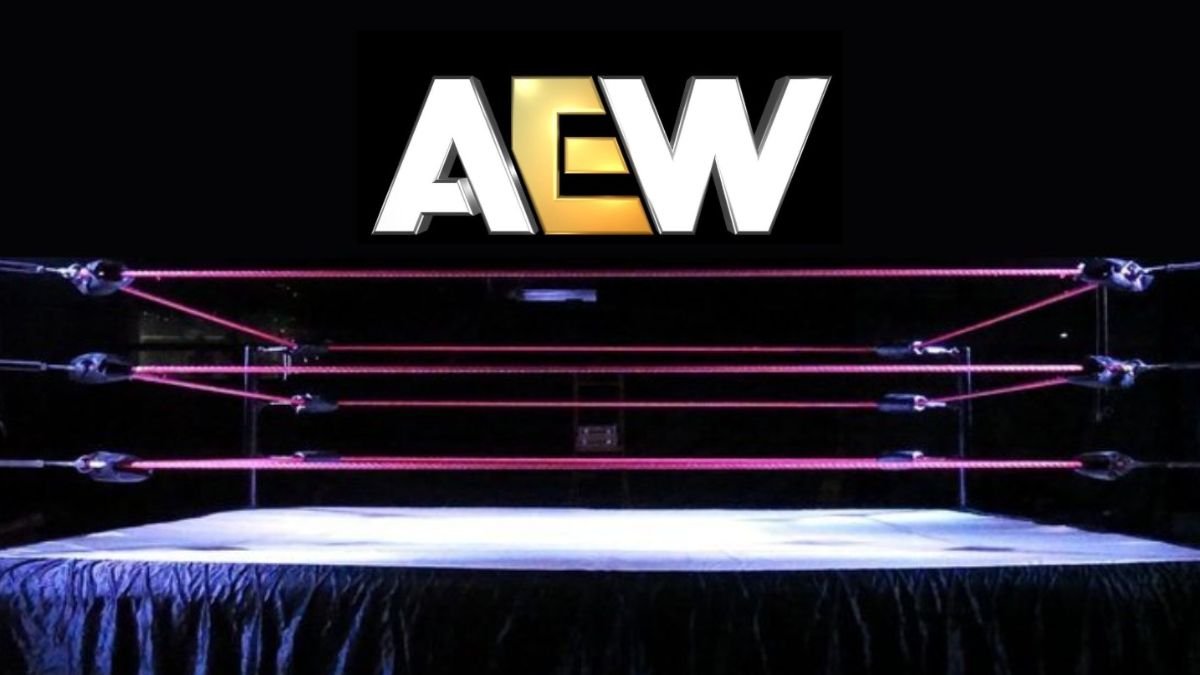
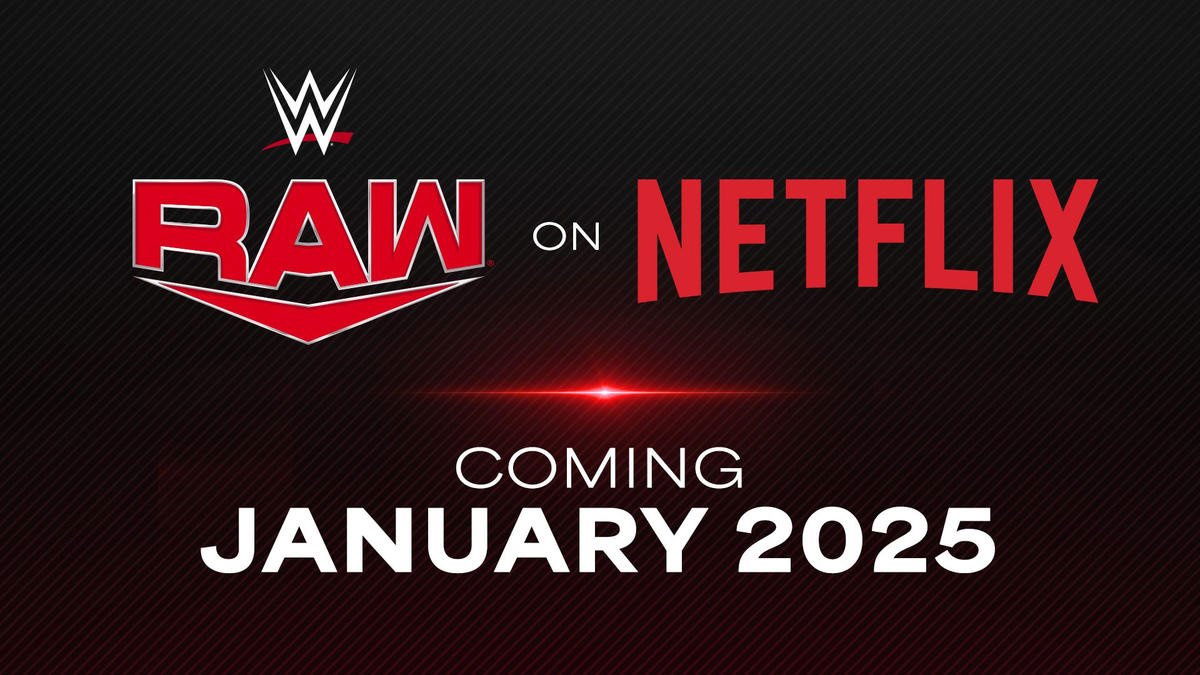



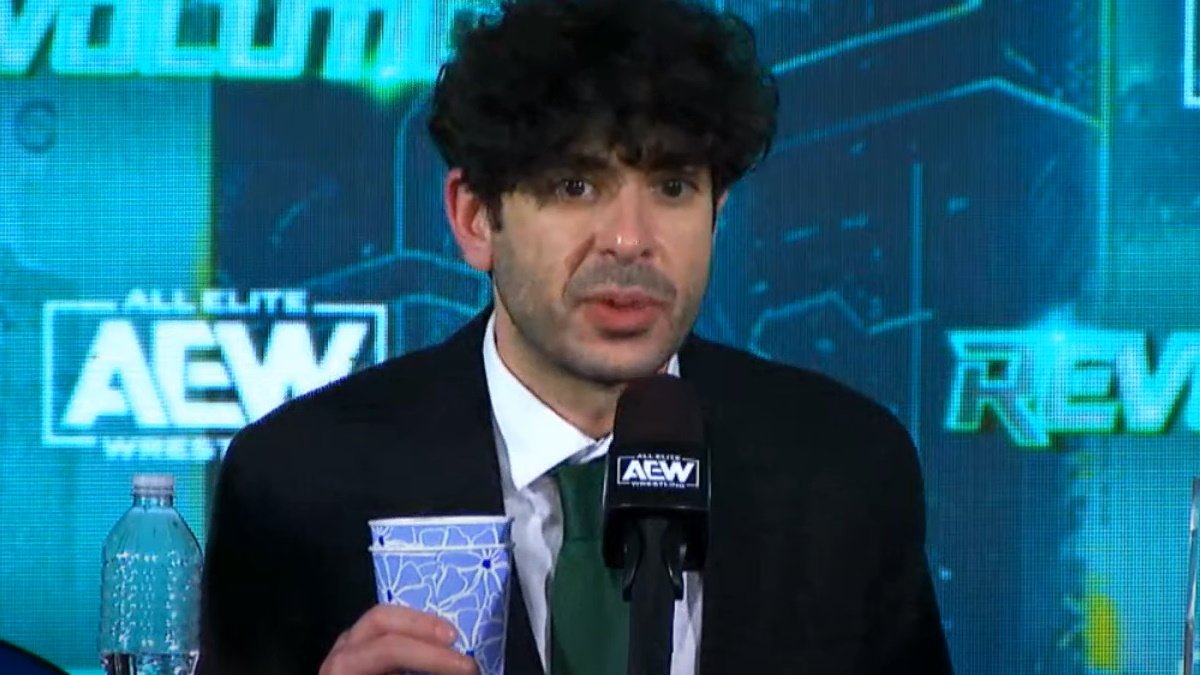

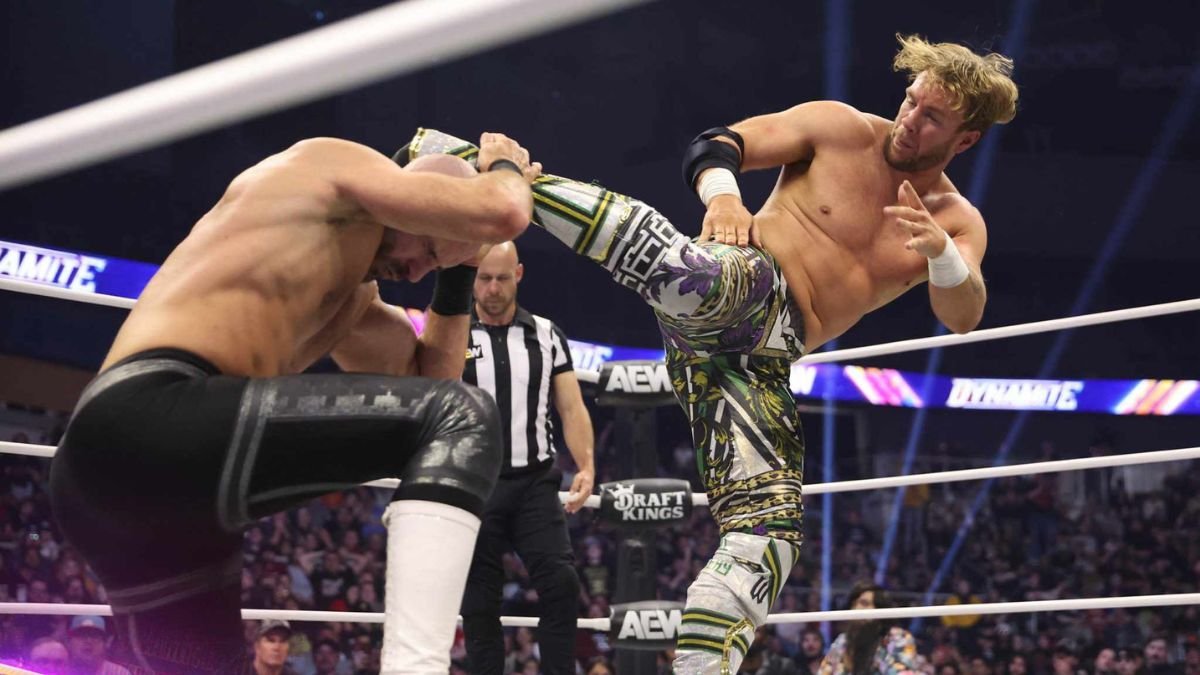
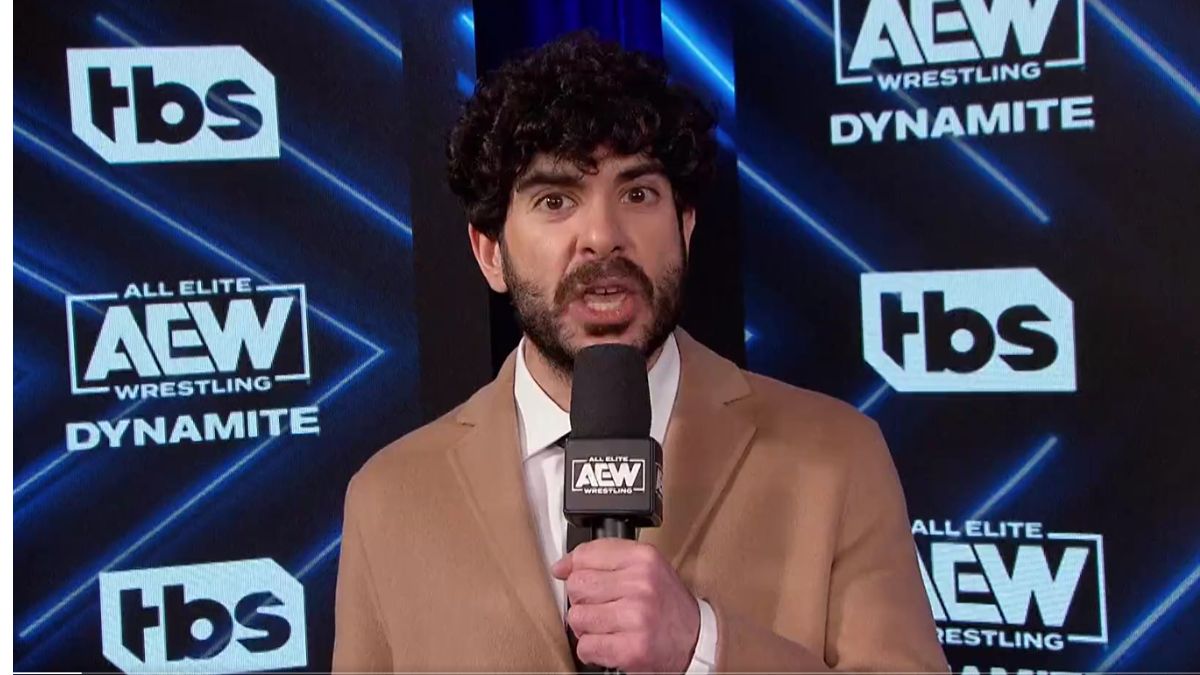

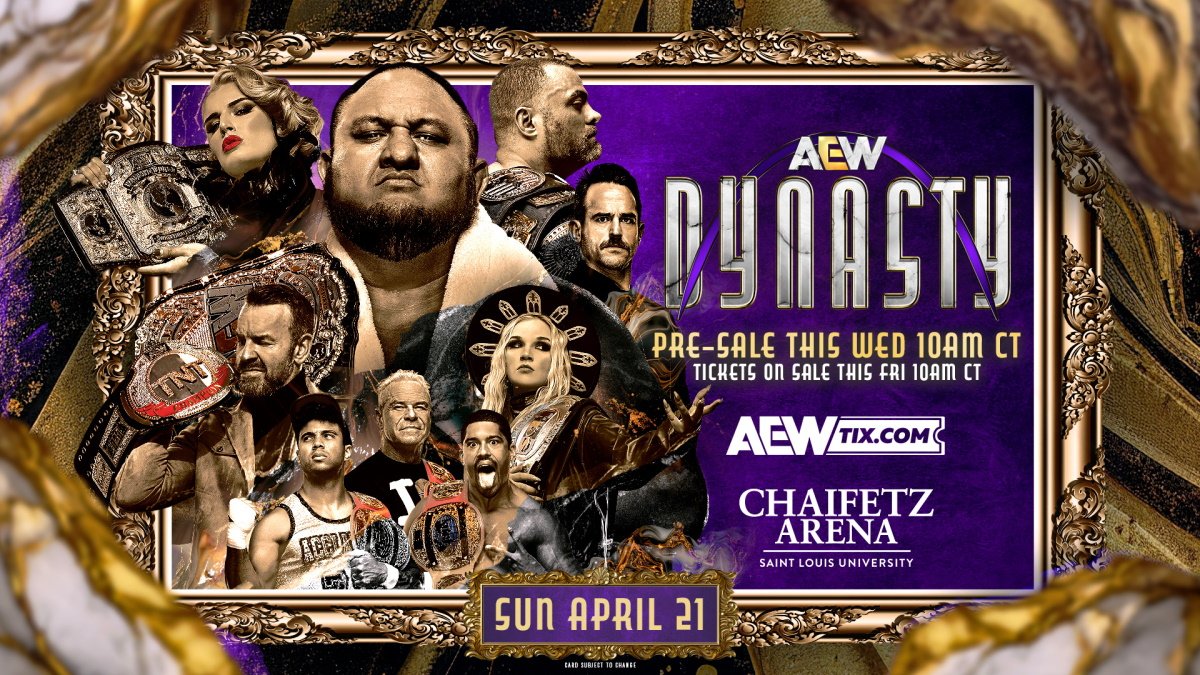
 mailing list
mailing list